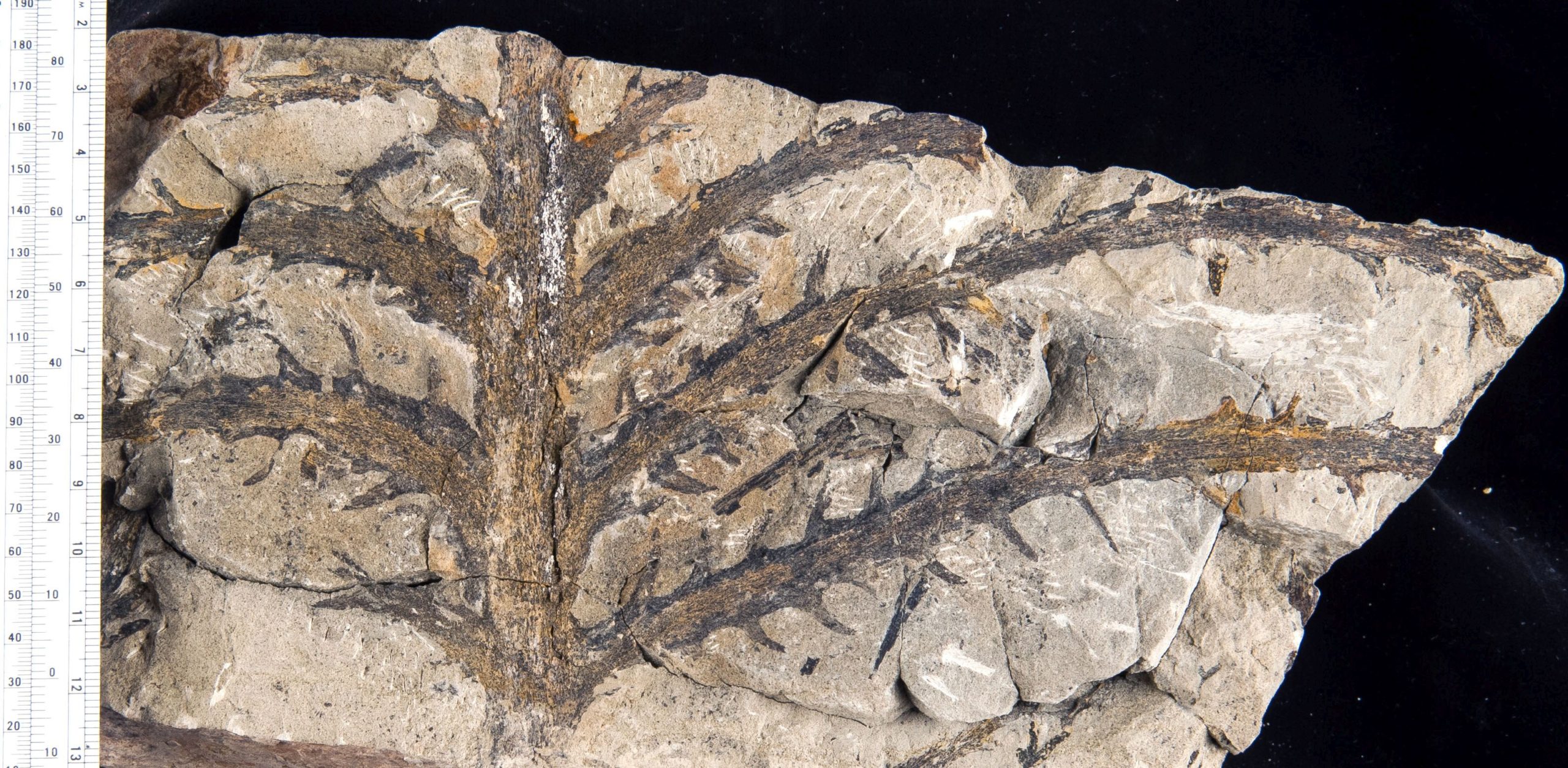
Loganophyton plant fossil from Northern New Brunswick.
The New Brunswick Museum (NBM) and the Foundation for the New Brunswick Museum are pleased to announce that an internationally significant fossil plant collection, a vital part of New Brunswick’s geological heritage will be making its way back to the province through the combined financial generosity of Canaport LNG, the Atlantic Geoscience Society, and anonymous donors. The donated funds will help to cover the cost of transportation from the United States, and most importantly, special curatorial cabinets to house and protect this internationally significant collection, which will be housed at the New Brunswick Museum.
The collection has been assembled by Dr. Patricia Gensel of the University of North Carolina, Chapel Hill, one of the foremost authorities on the evolution of plants of the Devonian Period. Since 1974 Dr. Gensel has been studying the ancient fossil plants of New Brunswick, so exquisitely preserved in the rocks of the north of the province. For the past several decades her work in NB was partially supported through NBM Matthew Research Grants and the support of Curator Emeritus of Geology and Palaeontology Dr. Randy Miller.
The significance of fossil plant sites exposed along the coast of northern New Brunswick was first recognized by Sir William Dawson in the 1800’s, a historically famous paleontologist who was a pioneer of Atlantic Canadian Geology.
“Fossils collected along the Bay of Chaleur have long played an important role in our understanding of plant evolution and the transition to terrestrial environments. Having this fossil collection back in New Brunswick at the NBM, where it is accessible, should be exciting for researchers world-wide,” notes Dr. Donald McAlpine, Head of the NBM Department of Natural History.
Dr. Gensel has spent her academic career studying these important fossils and has published numerous scientific peer-reviewed papers based on her discoveries in New Brunswick. “I have always felt privileged to have been able to collect and study plant fossils from northern New Brunswick” explains Dr. Gensel. “We discovered something new and different nearly every year for about 40 years, met some very nice people, and enjoyed the beauty of the area! I and my students benefited from the place, people and paleontology. I felt as though I were walking in the footsteps of Dawson!”
Many of the fossil sites Dr’s Dawson, Gensel and others have investigated disappear and re-appear over time due to coastal erosion and slumping, while some sites have eroded away completely and thus are no longer available to yield important fossil material. Over 40 years of careful collection has accumulated an internationally important fossil plant collection showing the diversity that existed during the evolution of terrestrial plants. The collection, now in Dr. Gensel’s laboratory at University of North Carolina, Chapel Hill, is considered one of the most significant Devonian-aged plant fossil collections known to paleobotanical research.
“What makes these fossils special is that the fossil plants are articulated with leaves still attached to the branches, with pollen and other anatomical details that are usually not preserved as fossils. There is also a high diversity of plant species, all preserved in these rocks alongside invertebrates only rarely fossilized, including sharks and giant sea scorpions.” explains Matthew Stimson, NBM Assistant Curator of Geology and Paleontology.
Although since the 1990’s many of the important fossil specimens from Dr. Gensel’s work have been deposited at the NBM, much of her work was conducted prior to the New Brunswick Heritage Conservation Act. Although this means there is no legal requirement to return the specimens to New Brunswick, Dr. Gensel has offered to donate her entire New Brunswick collection to the provincial museum to ensure its long-term conservation and availability for scientific study.
From the NBM’s beginning in 1842, as Gesner’s Museum of Natural History, the provincial geological collection has grown to well over 50,000 specimens. Today the NBM Geological collections are housed at the NBM Collection and Research Facility on Douglas Avenue in Saint John, where they are studied by researchers from across the globe concerned with piecing together our past and connecting us to our future.
“It is very important to us to support our local community, particularly in the area of education. We are very fortunate to have the New Brunswick Museum right here in Saint John, and we are pleased to be a small part of bringing this important collection here. This will be a wonderful opportunity for the public to understand and learn more about our Province’s natural history,” said Courtney Jones, Canaport LNG’s General Manager.
This endeavour could not be accomplished without the combined generosity of Canaport LNG, the Atlantic Geoscience Society, and anonymous donors.
For more information:
New Brunswick Museum
Caitlin Griffiths or Aristi Dsilva,
Communications and Marketing,
506-654-7059 or 506-643-2358
info@nbm-mnb.ca
